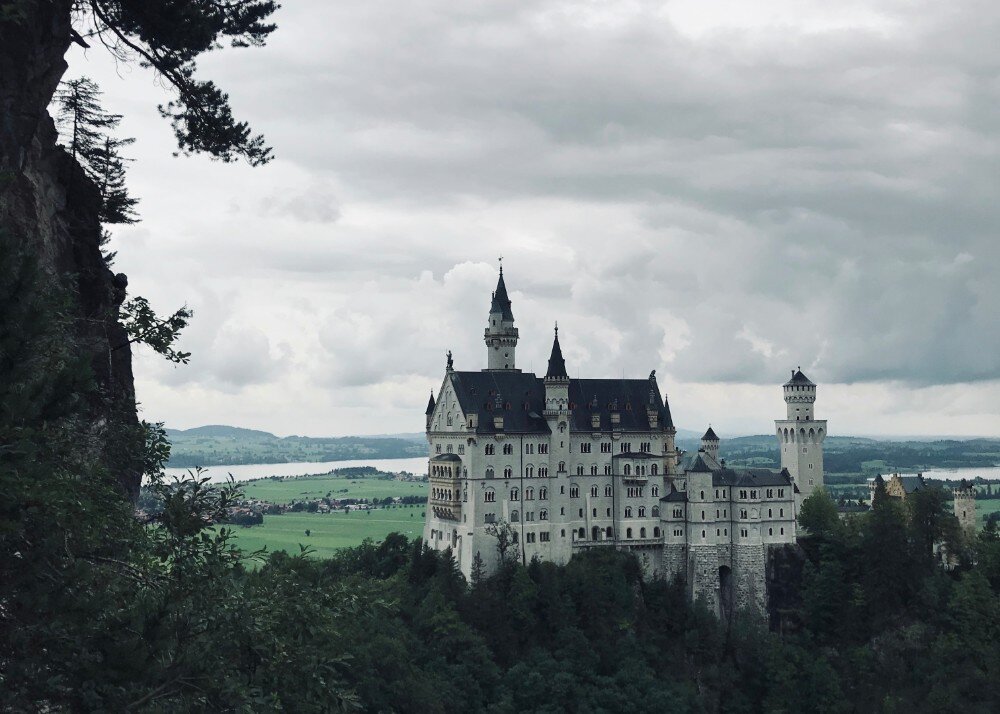On the tourist trail...
/By Paul Scraton:
From dawn until late into the evening, long after dusk, they gather on the street beneath our hotel room window. They come for the famous view, the one that adorns the front covers of guidebooks sold in a multitude of languages in the town’s souvenir shops; the one that features on postcards of the town in spring sunshine and winter snows; the one that provides the backdrop for an early 1990s computer game. It’s the view of the town that appears at the top of the town’s Wikipedia page and is the number one sight on Tripadvisor.
It is also the title picture for this piece. To the outside world, this view is Rothenburg ob der Tauber, and beneath our window visitors to the town gather, waiting patiently for their turn at a safe social distance, to take their own version home with them. Only, as our hotel receptionist could tell us, this summer there are far fewer amateur photographers than there might normally be.
The world doesn’t need another piece of writing about how strange this summer has been, but on a long trip south from Berlin to the Alps it was actually possible, on the high passes and hanging valleys, on the ridge line and down by the lake, to feel as if nothing was actually happening. Walking in the mountains it was possible to pretend, if only for a while, that the world was as it was before. But in between, in those places that form the highlights of many a grand European tour – Rothenburg ob der Tauber, Neuschwanstein Castle, the Rhine Falls – it was clear that this was a summer like no other.
Perhaps in any other summer, right in the middle of school holidays and the peak tourist season, we wouldn’t have even bothered to brave these places. Because of course, like all travellers, we like to think we are different to those crowds of tourists who follow the well-trodden trail through the checklist sights, ticking them off before shuffling back onto the air-conditioned coach. Indeed, these are the places we strive to avoid, even though they have become wildly popular for a reason, whether for their beauty, their location or simply the stories and the place in our culture they hold.
We are tourists too. We travel to escape the everyday and to see new things. This is our chance. In Rothenburg ob der Tauber we walk the city walls and soak up the atmosphere of the old town as a thunderstorm rolls in. At the Rhine Falls we follow a group of Dutch motorcyclists, sweating in their leathers, down the steps to where we can see and feel the power of the water rushing by in front of us. In Neuschwanstein we realise that even a pandemic cannot stop of the lure of this fairytale castle on the hillside, as all the tours are booked up and the only option, the friendly young man in a facemask tells us, is to join the queue at six in the morning and hope for returns.
But the absence of crowds is unsettling too. These are places that live from their visitors. What happens if they don’t come back? We cannot know what travel and tourism will look like in the short to medium term, let alone further into the future, but in Rothenburg ob der Tauber empty shop fronts on the main street tell the story of businesses that haven’t made it out the other side of the pandemic. And what we also can see is that it is not just about coronavirus. The clues were there on higher ground. Beyond the current situation, the climate crisis requires that we rethink all aspects of our lives, including how we travel. In the mountains it was possible to feel like none of this was happening, but it was only if we refused to look closer.
A guesthouse called ‘Glacier View’ has long been a misnomer, as the ice has retreated around the corner. It’s out of sight and will soon disappear entirely. Local newspapers write of dangerous rock falls on the high peaks, of unstable ground caused or at least exacerbated by climate change. And as the cable car carries up higher than our legs or mountaineering skills could ever manage, we can’t help but wonder what a ski season looks like without any snow?
We might have been able to escape the pandemic by climbing ever higher on the trails, but the feeling that up there things were as they ever were is just an illusion. We can’t go back, even if we would like to. The real question is – where do we go from here?
***
Paul Scraton is the editor in chief of Elsewhere: A Journal of Place and the author of Ghosts on the Shore: Travels along Germany’s Baltic coast (Influx Press, 2017) as well as the Berlin novel Built on Sand (Influx Press, 2019).




